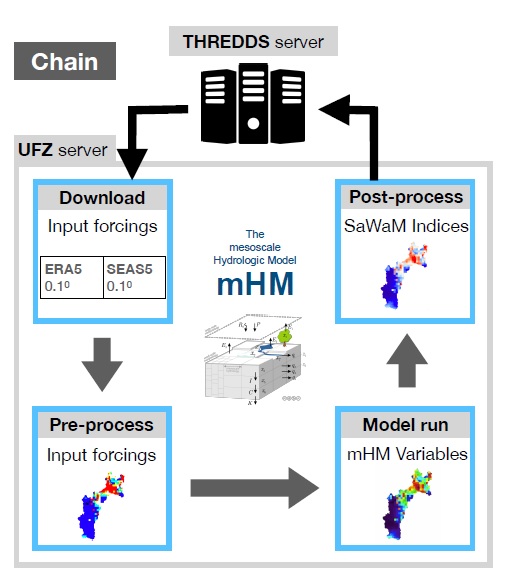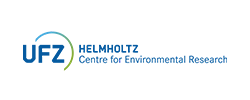The automatic model chain (AMC) processes more than 51 seasonal meteorological forecasts to generate probabilistic hydrological indicators related to soil moisture and streamflow conditions, providing a highly relevant seasonal hydrological forecast for agricultural and water management purposes.
Semi-arid regions are characterised by low annual precipitation with large intra- and inter-annual variability. An apt example of this is Khuzestan, Iran where the hydrological conditions reversed within two consecutive years: 2017/18 marked the driest year on record, whereas 2018/19 saw record-breaking flooding. With such levels of uncertainty, the water management community in these regions benefits greatly from hydrological forecasts provided several months in advance. However, numerical modelling of these regions is not trivial due to existing dams.
Distributed hydrological models are state-of-the-art tools that enable model-based-action at the local scale. We employ the mesoscale hydrological model, mHM, which produces seamless scalable state variables, fluxes and, overall, a scale-independent basin hydrology with its Multiscale Parameter Regionalization MPR (Samaniego et al. 2010, WRR) and Subgrid Catchment Contribution SCC (Shrestha et al. 2020, EGUGA) techniques. The seasonal hydrological forecasting system with mHM at its core produces monthly forecasts of up to six months in advance.
The methodology consists mainly of two parts. First, a model mHM is created for the project regions including the major reservoirs. The model is then optimized against water levels at reservoirs and downstream streamflow stations. Second, an automated model chain to produce seasonal hydrological forecasts at 0.1 degree (~10 km) resolution is developed. The generated forecasts include maps with probabilities that indicate the state of water in soil, reservoirs and rivers.


